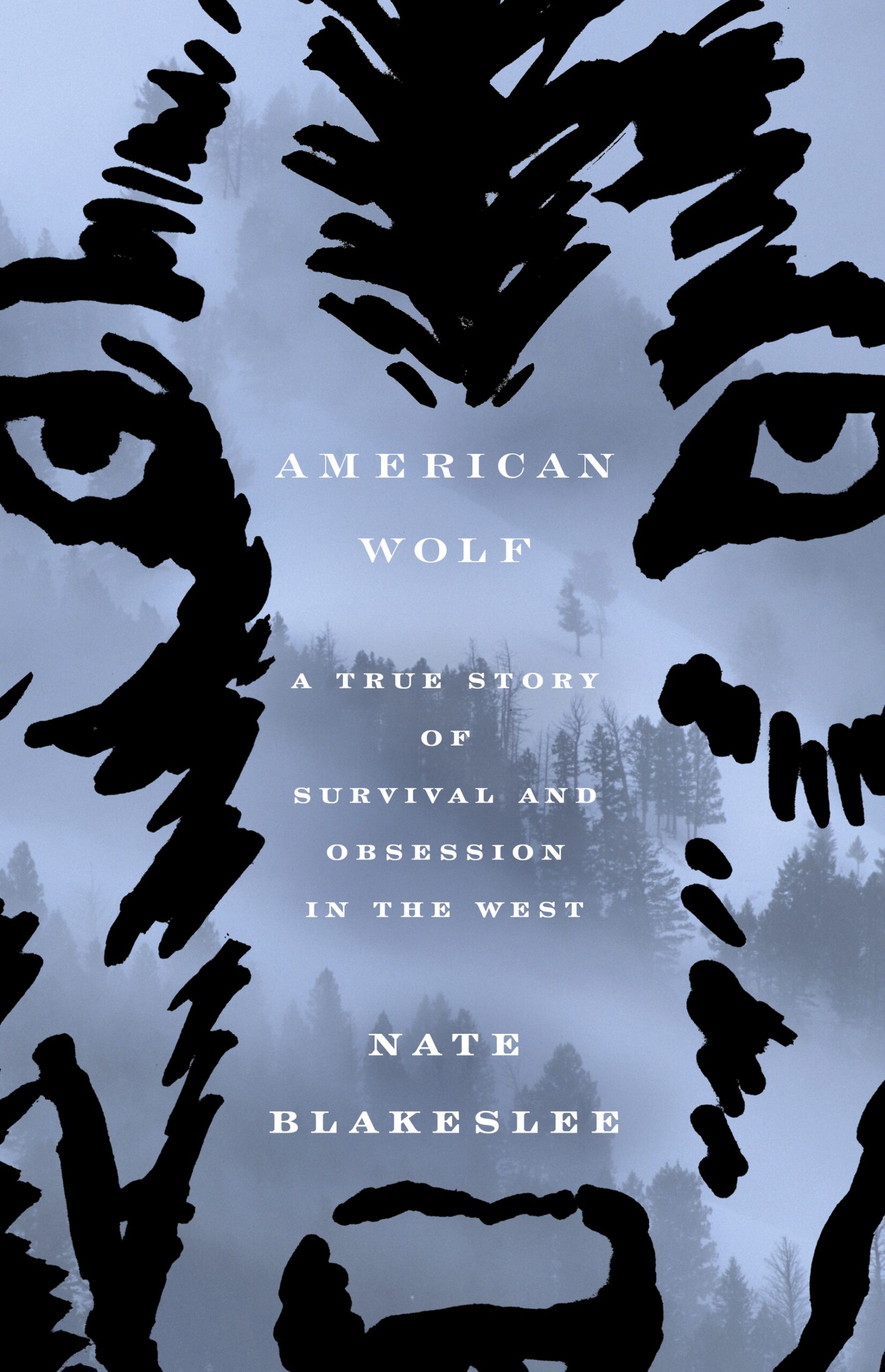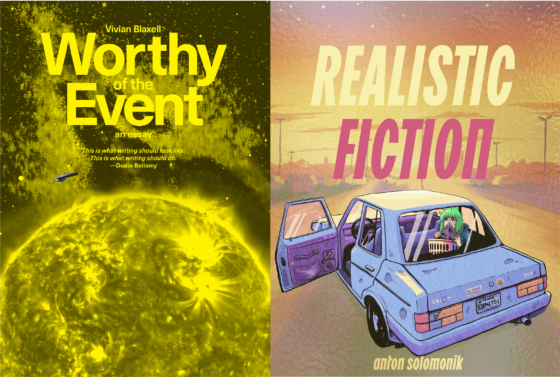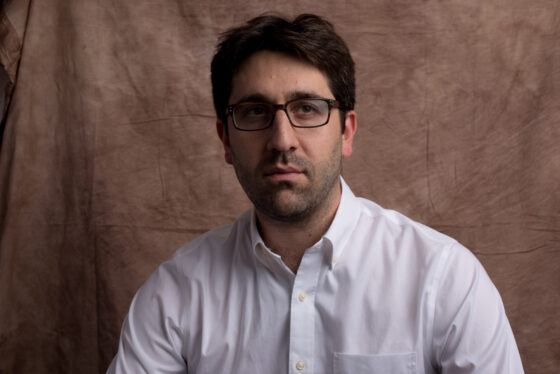
First, a confession: I did not pick up Nate Blakeslee’s American Wolf: A True Story of Survival and Obsession in the West because I heard Leonardo DiCaprio had already signed on to produce the cinematic version. But when I did learn that, I was halfway through the book and already casting in my mind.
Published in October, American Wolf is an immaculately rendered true story about Yellowstone’s wolves and the people who love and hate them, as Blakeslee brings together the voices of biologists, conservationists, hunters, ranchers, lawyers, and politicians in an evenhanded portrait of the fight to define wilderness and belonging in the American West. This is that breed of J. Anthony Lukas-y nonfiction that makes you feel like you are reading a novel, if that novel makes you feel like you are watching a film.
Blakeslee, a former staff-writer and current contributing writer for Texas Monthly, won the J. Anthony Lukas Book Prize for his first book Tulia: Race, Cocaine, and Corruption in a Small Texas Town. With American Wolf, Blakeslee turns his journalistic eye to the controversial story of wolf reintroduction in the Rockies, tracing the life of O-Six, a charismatic alpha and mother wolf beloved by fans through both binoculars and social media. Some of the book’s most surreal scenes unfold without a human in sight, recreated through notes that Blakeslee received from committed Yellowstone wolf-watchers. One of the thrills of the book is how it lets readers imagine what it might be like to see from the eyes of wolf—to do as Lakota hunters once spoke of and to crawl inside the animal’s skin.
In October, I called him at his home in Austin to talk about wading through piles of source material, cultivating trust in his sources, and how he recreated action-packed scenes he did not witness.
***
The Rumpus: You say in the afterward that you first went to Yellowstone with your kids in 2007. When did you start reporting this project?
Nate Blakeslee: That 2007 visit was kind of the seed of the project. I thought there might be a magazine piece in there, especially maybe a profile of wolf-watcher Rick McIntyre, but I just couldn’t figure out if that was the right way into the story. And then in December 2012 I, along with everybody else, read about the life of O-Six when the New York Times reported on it. That’s when I first started thinking there might be a book.
Rumpus: One of the things that felt most striking to me were all those uncanny moments where I felt like I was inside the mind of a wolf. I’d have to remind myself that no humans were present in those scenes, and that all the details were filtered through a wolf-watcher’s spotting scope. Did you always know the book could have that sort of embedded “in the pack” perspective?
Blakeslee: That was one of the things that made it an exciting prospect. I was first drawn to the issue because I have always loved the West, and I was completely taken by the wolves when I went out there to do that wolf-watching class. So I knew that I had strong enough feelings to carry me through the whole book project. But the prospect of being able to write a scene that didn’t have any people in it whatsoever—and have it read like a scene from Jack London or something—that just seemed like a really rare opportunity. The only reason that was even possible was because of how closely observed O-Six’s pack was. They were really popular with casual visitors to the park just because they were the pack that was easiest to see, but these wolves were also the favorite of these aficionados that would go every day and take notes. So very early on in the reporting I met one of these people, Laurie Lyman, and I found that she had what amounted to a daily diary of the pack for three years—basically the time period I would need to tell the story. Eventually she agreed to share it with me.
Rumpus: Laurie lent you like 2,500 pages of those notes. That’s a crazy number. What was it like sifting through that material?
Blakeslee: Of course you’re delighted when somebody hands you that material, but it’s daunting, too. It was something like 800,000 words, and obviously not all of it was germane to my project. But it wasn’t super searchable.
Rumpus: What form was it in?
Blakeslee: Every day she would type up her daily notes and email them out to all of her friends, and then later on everybody just subscribed to her website. It was basically like an endless list of emails. Fortunately, she put headers in sometimes, like, “Here’s what happened with the Lamar pack today.” I read it all just because I wanted to know what life for any wolf pack was like in Yellowstone, not just the pack that I was focusing on. And then if I found a scene that was unusually compelling I would earmark that and think, Well, here’s one that could probably stand to be a real set piece in the book—a real scene with nice description. So for those I would go back and interview other people that were there, and also try to get Rick McIntyre’s notes from that same day because he also took unbelievably voluminous notes. I mean, he wrote down every single thing that he saw. His are like, “The wolf stood up, paced, sat back down.” And there are pages and pages of that, whereas Laurie’s were more like describing what she saw, giving her impressions, talking about how she understood the personalities of the wolves. That was good because it gave me a feeling for what she herself was like, and what the wolf-watching community was like, which is an interesting little subculture to get into.
Rumpus: You mentioned Jack London earlier. Have you ever been drawn to writing fiction?
Blakeslee: I have never really considered it. I mean I live in Austin, so pretty much everybody here is writing a screenplay. [Laughs] I do have this partially written screenplay on my computer but I don’t know if anything will ever happen with it. I think it would be fun to write for TV right now because a lot of really smart and creative people are writing TV now.
Rumpus: But it sounds like a good dose of your excitement comes from getting to piece together a story through real people.
Blakeslee: Definitely. If I were to write a treatment for a TV show or something it would be based on something that you could really immerse yourself in, something deeply reported. I would go about it as if I were writing a magazine piece, but then I would have the liberty of taking off and inventing dialogue and having the characters do what I want them to do.
Rumpus: Your book maintains such a cinematic quality as is, and it made me wonder how you think about the minutia of questioning needed to do to reconstruct these complex scenes. In a recent interview, for example, Susan Orlean basically made a case against interview prep. What do you think about it?
Blakeslee: If you’re going to be working on a project for as long as it takes to work on a book, you need to be working with people that you like. If you don’t like them, they’re going to figure that out eventually and it’s going to be very unpleasant for you. So you have to build a relationship with [them], and it has to be based on trust and mutual respect. And you have to be able to tell someone, “You know, I’m going to tell your story the way it deserves to be told. And you’re not going to regret working with me.” And you have to be able to mean it.
That’s the kind of philosophy that I come to them with. You always remember that you are there for a reason and you are at work while you’re talking to them. So it’s a curious sort of a relationship—not a friendship, exactly, although I consider some of the people I worked with on the book to be my friends. But you also have to know that your first responsibility is to call it like you see it. You can’t guarantee anybody that they’re going to like every single thing they read in the book, and of course you tell them that and you hope that they take that to heart.
Rumpus: A few years ago I did some research on wolf reintroduction in a small town in eastern Oregon, and I was very aware of skepticism about city people parachuting in for journalism about this hyper-politicized issue. I’m curious, since most of your reporting is from Texas, what was it like coming to Montana and Wyoming for this project? Were you living there while you wrote?
Blakeslee: No, I have two young kids so I would just go for a week or two at a time. That went on for a long time. Of course, anytime you are reporting somewhere far from home you worry that you’re going to be perceived as another person parachuting in, and you’re right that there was an awful lot of that. But once people see that you’re there and you come back, and you come back again—and you’re hanging out with them and you’re spending time and getting to know what all their lives are like—eventually that wariness they have for you as an outsider will go away. Also, when I was talking to Wyoming hunters or people who ran hunting lodges, it probably helped that I was from Texas. I didn’t grow up a hunter, but many of my friends did, and everybody around here hunts. Though Texas isn’t the mountain West, there are some good similarities.
I found out later that some of the wolf watchers were like, “We don’t want to talk to him—he’s from Texas.” So I guess it worked against me initially, too.
Rumpus: In American Wolf, did you ever feel like your presence crossed over from being a bystander to being a player?
Blakeslee: No, other than the fact that there is a profile of Rick, and also, to some degree, a profile of the hunter, and in a profile you have to get over this initial phenomenon where the person being profiled is trying to sort of shape the way they appear. As anyone would! I mean, common sense dictates that if you know a great many people are potentially going to read the profile, than you want to put your best self forward. But that runs counter to what you’re trying to do as a journalist. In any story, you want the subject’s most authentic self. The only thing you can do is to spend as much time as you can talking to the person, so eventually he lets his guard down. Talk to his friends and family, or, you know, his enemies and ex-wives. [Laughs]
Rumpus: It sounds like you had to do some cajoling to get people to open up to you.
Blakeslee: Yeah, because Rick is a very eccentric person—a genuine eccentric. I’ve never met anyone quite like him: Rick McIntyre, wolf guru. He was, in many ways, a shy person and an introvert, which was strange because his career involved talking to strangers all day long on the side of the road in Yellowstone. He said yes to the idea of being profiled in the book, but I don’t think, at the time when he said yes, that he realized the extent of how in-depth it would be. But to his credit, when he did realize that, he was fine with continuing. And then, obviously, the hunter who I am calling Stephen Turnbull had a lot to lose by participating. He knew he could be the next dentist who shot Cecil the Lion. He may yet be. But his only stipulation was, “Don’t use my name, and change enough details that it won’t be obvious who I am.” But it took me about twenty-four hours to find him. So someone who wanted to know his identity certainly could find it.
Rumpus: Besides looking at the wolf-watchers notes, I imagine you had to do a lot of actual wolf-watching to be able to describe how their bodies moved, etc.
Blakeslee: I spent a lot of time interviewing wolf-watchers so I would get to do wolf-watching on my own, too. Plus, I’d taken that class back in 2007. I also watched every documentary that had ever been made about Yellowstone wolves. There is so much amazing footage that it was kind of daunting. I mean, at the time that Jack London wrote those books, you couldn’t just turn on Nat Geo Wild and see scenes of unbelievable animal behavior, filmed in such clarity that you know you can never reproduce it in a book. But that sort of thinking is a dead-end street.
Rumpus: What other literary models were you looking to?
Blakeslee: I’ve read that book by John Vaillant, The Tiger: A True Story of Vengeance and Survival, and he is a master at describing these action scenes of animal behavior. He had so much less to go on because there were only like three or four actual sightings of that tiger, so he made the material he had, whereas I had so much material I had to pick and choose. And then I read H Is for Hawk, which, if you’re not reading for pleasure—if you’re reading it for the purposes of improving your own project—is just depressing as hell. That book is unbelievably well written! You realize as you’re reading it, like, “Well, my project is not going to be like this but maybe there are a few things that I could try to emulate.”
Rumpus: I thought a lot about how effectively your prologue foreshadowed the rest of your book. I guess you knew the arc of the story when you started writing, but how did you think about the levers of plot?
Blakeslee: The first big decision was whether or not to let people know what happens to the wolf, which I won’t ruin here. But from the beginning you can obviously tell that something terrible is going to happen. So my initial idea for structure was you would meet these three main characters—Rick and Turnbull and O-Six—and you would have in mind that their fates are going to come together at some point, presumably at the climax, because that’s what the prologue hints at. But the structure was that I would show them individually as they moved forward chronologically, so the reader would slowly see their paths converging.
Rumpus: You navigated the presence of “I,” which emerges in the epilogue when you are processing the scene in the hunter’s cabin. For example, you write, “It felt profane, though I had no idea how to explain to my host why.” How did you balance that personal voice?
Blakeslee: You know, I’m a magazine writer, so in my business we’re allowed to do that, though encouraged not to abuse it. Because the epilogue was set apart, it seemed okay to change the tone. And I thought it might be appropriate just because that scene was one of the most amazing moments I’ve had in my reporting career. I thought it would be a shame not to be able to include it as a scene. And to do that, I needed myself right there.
Rumpus: We have such a long cultural lineage of writing about wolves, but it occurs to me that a good amount of that is pretty far on the side of people who love wolves. You did a lot to complexly humanize this pseudonym’d hunter who has never used Google, never used email.
Blakeslee: I didn’t want to write a polemic. I think the book does make an argument, but it makes it kind of organically. You can either tell somebody what you think is the case or you can tell a really good story and hope that they will come to the same conclusion that you have. That’s the great tradition of Texas Monthly—narrative nonfiction where you tell a good story and hope it will move the reader in some way and change the way that they see some issue or the world. So that’s what I tried to do with this book.
My personal feeling is that there is no good rationale for trophy hunting wolves. I’ve heard several of them and I don’t find any of them convincing. You might be able to make a case for government trappers culling on behalf of livestock, but that’s a different issue. So I never say it anywhere in the book, but I’m hoping by the end of the book people are like, “Man, hunting for wolves is bad public policy; they shouldn’t do it anymore.” That’s where I’m coming from. But when the hunter and I were discussing whether or not he would participate in the book, I promised him that his perspective would be presented just as fairly and accurately as the perspectives of the wolf-watchers, and I hope that he will find I have done that.
Rumpus: You mention the Bundy standoff in your endnotes, and it made me think about how you have been making sense of the West’s culture wars since you started reporting.
Blakeslee: In terms of wolf management, not a whole lot has changed. The situation is still very polarized, still very much in flux. After the book went to press, wolf hunting was legalized again in Wyoming—it doesn’t say that in the book because it was kind of a moving target and we had to go to the printer at some point. But wolf season in Wyoming just started over there, and a lot will be killed. But in the rest of the lower-48 they are still fighting over whether or not wolves should remain protected, and they are still fighting over whether or not there ought to be a hunting season in the upper Midwest. In terms of wolves being another general flashpoint in the cultural divide, like abortion or gun control—well, you would like to think that would have died down somewhat in the tewnty years since wolf reintroduction, and maybe it has to some degree, but people like the Governor of Idaho are still ginning up votes saying, We’re going to kill a bunch of wolves.
***
Author photograph © Jeff Wilson.





